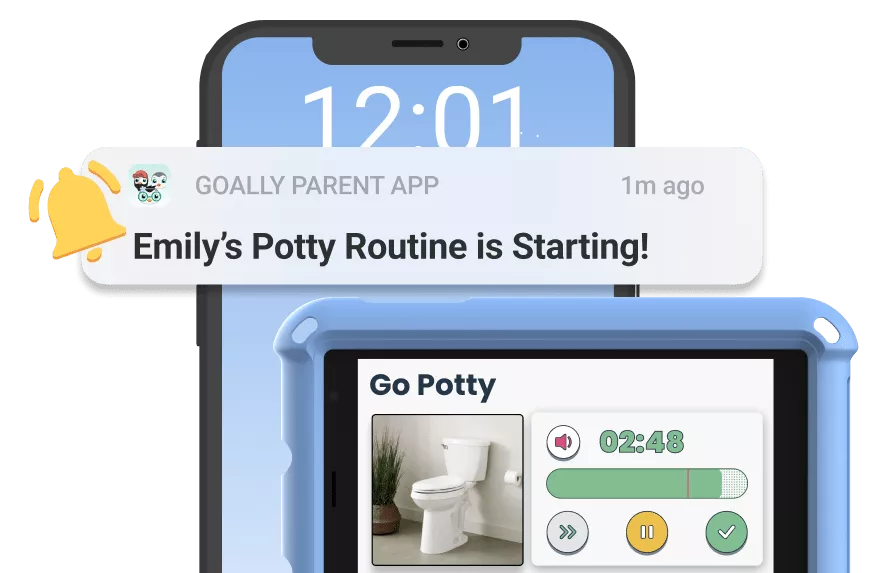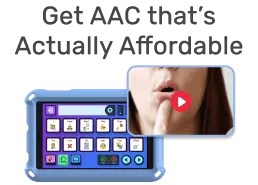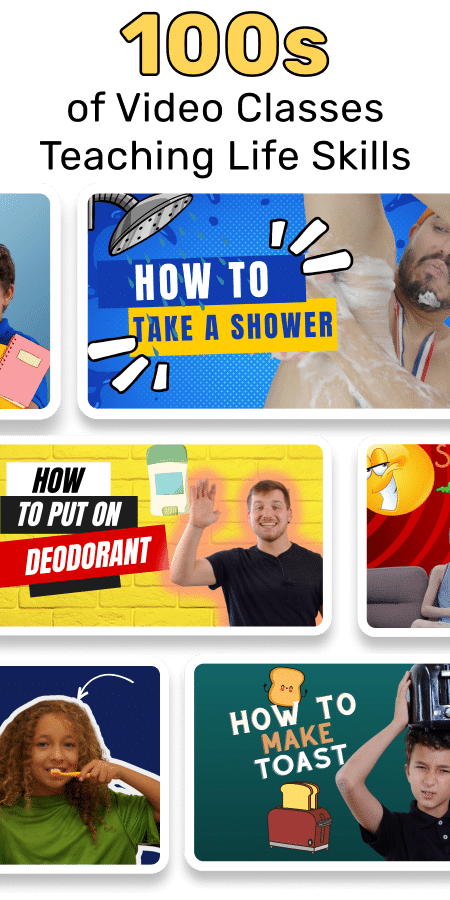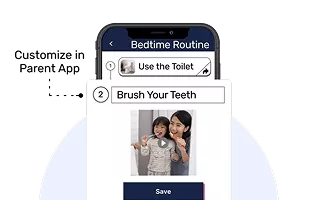Creating structure for your child’s day doesn’t have to be complicated. A first then visual schedule is one of the simplest—and most effective—tools for helping kids understand what’s expected of them. It breaks tasks into manageable steps using clear visuals, making transitions smoother and reducing resistance during daily routines.
Whether your child has special needs, struggles with transitions, or just benefits from extra structure, a first then visual schedule can improve focus, reduce meltdowns, and encourage independence.
Key Takeaways:
- A first then visual schedule breaks tasks into two clear steps: what happens first, and what comes next.
- This tool is especially effective for neurodivergent kids or children who struggle with transitions.
- Visual supports help reduce anxiety and increase cooperation during daily routines.
- You can create your own schedule with printables, photos, or tools like Goally that walk kids through tasks.
- First then schedules promote independence by helping kids know what to expect—and what they’re working toward.
What is a First Next Visual Schedule?
A first then visual schedule is a fantastic tool designed to help kids with thinking and learning differences. It breaks up their day into smaller, easy-to-follow steps, turning potentially overwhelming tasks into fun mini-adventures. This schedule can work wonders in building their confidence and independence and keeping stress at bay.
The “First” part shows the current activity your child should focus on, while the “then” part indicates what comes after. This precise step-by-step method helps your child anticipate what’s ahead and makes the shift between tasks much smoother.
So, why should you consider using a first next visual schedule for your kid? Not only does it help them understand their daily routine, but it also equips them with valuable life skills. They’ll learn to better manage their time, prioritize tasks, feel at ease with changes, and take ownership of their day.
Read more: Daily Schedules and the Importance of Routine for Autism
The Science Behind Visual Schedules
There’s some cool science behind why visual schedules are so effective for neurodivergent kids. Let’s take a quick look at a few key reasons they work:
- Routine and Predictability: Kids with thinking and learning differences feel best when they know what will happen. Visual schedules offer a clear structure, helping them feel secure and easily handle changes.
- Seeing is Believing: These kids often learn better through visuals, making visual schedules the perfect tool. It taps into their natural learning style, making their daily routine simpler to follow.
It’s incredible how such a simple tool can immensely benefit your child’s development. Visual schedules address some of the most common challenges faced by neurodivergent kids, such as:
- Struggling with transitions
- Difficulty understanding time
- Feeling overwhelmed by multi-step tasks
Visual schedules help turn daily routines into a fun, enjoyable journey. They provide valuable life skills, such as time management, prioritization, and adapting to changes. And the best part? You’ll give your child the support they need to thrive while making your life easier.
Different Styles, One Goal:
Before creating the next visual schedule for your little one, you need to know the different styles available. Here’s a summary of typical visual schedules:
- Object Schedules: Perfect for young kids or those with limited language skills. Objects (like a toothbrush for brushing teeth) represent each task.
- Picture Schedules: Ideal for young children, these schedules use photos or drawings to represent tasks. They’re great for visual learners who quickly connect pictures to real life.
- Written Schedules: Suitable for kids who can read, written schedules use words to list tasks in order. Adding checkboxes can motivate them to track progress.
- Hybrid Schedules: Combine different schedule types to find the best fit. This lets you customize your child’s schedule to meet their unique needs.
Take the time to choose a schedule that suits your child’s preferences and abilities. Each schedule type has its own strengths, so consider the following:
Learn more about how to use a visual schedule for autism.
- Your child’s age and development level
- Their learning style and communication skills
- The level of support they need for daily tasks
Craft Your Own First Next Visual Schedule
Ready to make a first next visual schedule for your kid? Follow these easy steps:
- List Tasks: Brainstorm daily tasks your child needs to do. Pick the most important activities to include in the schedule.
- Pick Your Style: Choose a schedule format based on your child’s needs. You can also create a hybrid schedule with different elements.
- Design Time: Set up your schedule with clear images, words, or objects for each task. Ensure the “First” and “Next” parts are easy to spot.
- Show and Tell: Explain the new schedule to your child. Review each task, emphasizing the “First” and “Next” parts. Be patient and give lots of praise.
Read more: Toddler Schedule Chart | Free Printable
Table of Contents
Making Visual Schedules a Habit
Once you’ve made a first next visual schedule, it’s time to embed it in your child’s daily routine. Here are tips to make it work like a charm:
- Consistency: Use the visual schedule regularly, referring to it often – especially when switching tasks.
- Go with the Flow: Sometimes, plans change. Teach your child that it’s okay to adjust the schedule. This helps them learn to be more flexible in life.
To make visual schedules a daily habit, be sure to:
- Keep the schedule visible and accessible
- Offer support and guidance when needed
- Use positive reinforcement and praise
- Monitor progress and adjust as necessary
Goally | Routines that Actually Work
Goally’s skill building tablet for kids has routines that break down large tasks into small, achievable steps. It helps kids complete their tasks independently!
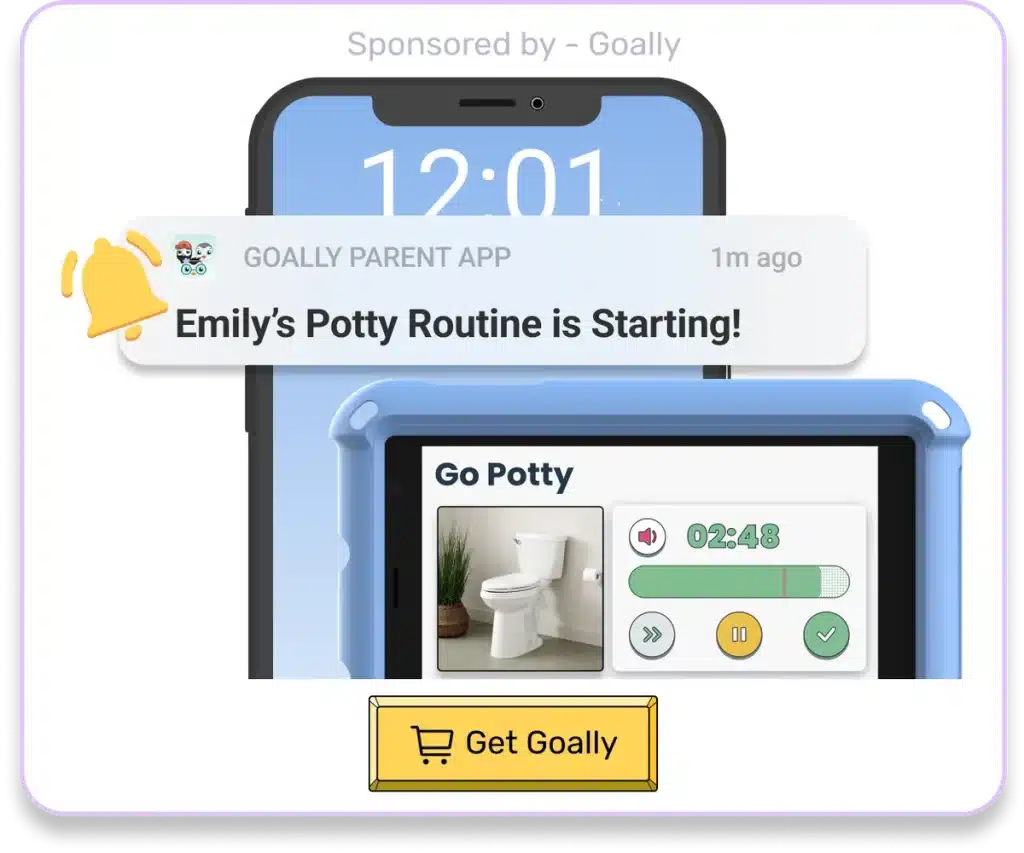
Create custom routines with your own videos & pictures for every step. The steps come in small, bite-sized pieces to help your child learn the little fundamentals (like putting the toothpaste on their toothbrush!) to achieve bigger goals. And that’s just the beginning. See it in action:
A First Next Visual Schedule is an incredibly effective tool to help children, especially those with learning differences, navigate their daily routines with ease. By breaking tasks into simple, visual steps, this method fosters independence, reduces stress, and makes transitioning between activities smoother and more enjoyable. Whether it’s for getting ready in the morning or tackling homework, this visual guide empowers kids to take charge of their day, building confidence and valuable life skills along the way. Try incorporating one today to create a more structured and stress-free environment for your child!
FAQ’s about First Then Visual Schedules
What is a first then visual schedule?
A first then visual schedule is a simple visual tool that shows two steps: what a child needs to do first and what will happen next. For example, “First brush teeth, then screen time.” It helps kids understand expectations and makes transitions easier, especially for kids with autism, ADHD, or other learning differences.
Who can benefit from using a first then schedule?
First then schedules are great for all kids, but they’re especially helpful for neurodivergent children who may struggle with changes in routine or need extra support following instructions. They provide structure, reduce anxiety, and help kids stay focused on one task at a time.
How do I make a first then visual schedule?
You can make one using paper, printed icons, photos, or apps. Just choose two clear tasks or events, label them “First” and “Then,” and use simple images your child understands. Tools like Goally also let you build digital first then schedules right on a tablet.
When should I use a first then schedule?
Use it any time your child needs help completing a task, transitioning between activities, or staying motivated. It works well during routines like getting ready in the morning, cleaning up toys, or doing homework. You can also use it for tough moments—like leaving the park or turning off the TV.
What if my child resists following the schedule?
Start by using motivating rewards for the “then” part and make sure both steps are achievable. Keep it simple and consistent. Over time, kids learn that completing the “first” leads to something they enjoy, and the schedule becomes a predictable part of their day.
Emily is a seasoned blog writer for Goally, leveraging her extensive background in child psychology and special education to provide valuable insights and resources for parents. Her commitment to understanding and addressing the unique needs of these children, combined with her expertise in educational strategies, makes her a credible and empathetic voice for families.

